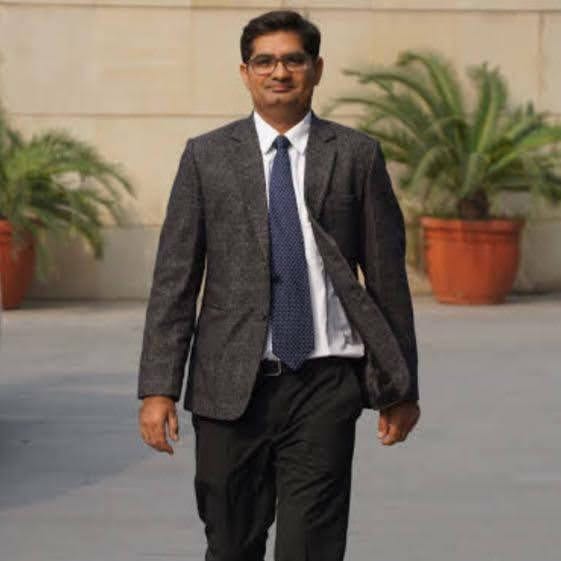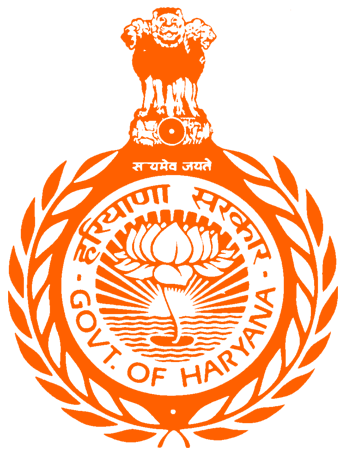Sociology
Sh. Vinod Manjhu Pgt/Lecturer , B.A, DPE ,B.Ed, MA (Sociology), CTET, HTET, NET.

SOCIOLOGY
CLASS XI-XII (2022-23)
(Code No. 039)
Rationale
Sociology is introduced as an elective subject at the senior secondary stage. The syllabus
is designed to help learners to reflect on what they hear and see in the course of everyday
life and develop a constructive attitude towards society in change; to equip a learner with
concepts and theoretical skills for the purpose. The curriculum of Sociology at this stage
should enable the learner to understand dynamics of human behavior in all its
complexities and manifestations. The learners of today need answers and explanations
to satisfy the questions that arise in their minds while trying to understand social world.
Therefore, there is a need to develop an analytical approach towards the social structure
so that they can meaningfully participate in the process of social change. There is scope
in the syllabus not only for interactive learning, based on exercises and project work but
also for teachers and students to jointly innovate new ways of learning.
Sociology studies society. The child’s familiarity with the society in which she /he
lives in makes the study of Sociology a double edged experience. At one level
Sociology studies institutions such as family and kinship, class, caste and tribe
religion and region- contexts with which children are familiar of, even if
differentially. For India is a society which is varied both horizontally and vertically.
The effort in the books will be to grapple overtly with this both as a source of
strength and as a site for interrogation.
Significantly the intellectual legacy of Sociology equips the discipline with a plural
perspective that overtly engages with the need for defamiliarization, to unlearn and
question the given. This interrogative and critical character of Sociology also
makes it possible to understand both other cultures as well as relearn about one’s
own culture.
This plural perspective makes for an inbuilt richness and openness that not too
many other disciplines in practice share. From its very inception, Sociology has
had mutually enriching and contesting traditions of an interpretative method that
openly takes into account ‘subjectivity’ and causal explanations that pay due
importance to establishing causal correspondences with considerable
sophistication. Not surprisingly its field work tradition also entails large scale survey
methods as well as a rich ethnographic tradition. Indeed Indian Sociology, in
particular has bridged this distinction between what has often been seen as distinct
approaches of Sociology and Social Anthropology. The syllabus provides
ample opportunity to make the child familiar with the excitement of field work as
well as its theoretical significance for the very discipline of Sociology.
The plural legacy of Sociology also enables a bird’s eye view and a worm’s eye
view of the society the child lives in. This is particularly true today when the local
is inextricably defined and shaped by macro global processes.
The syllabus proceeds with the assumption that gender as an organizing principle
of society cannot be treated as an add on topic but is fundamental to the manner
that all chapters shall be dealt with.
The chapters shall seek for a child centric approach that makes it possible to
connect the lived reality of children with social structures and social processes that
Sociology studies.
A conscious effort will be made to build into the chapters a scope for exploration
of society that makes learning a process of discovery. A way towards this is to deal
with sociological concepts not as givens but a product of societal actions humanly
constructed and therefore open to questioning.
Objectives
To enable learners to relate classroom teaching to their outside environment.
To introduce them to the basic concepts of Sociology that would enable them to
observe and interpret social life.
To be aware of the complexity of social processes.
To appreciate diversity in Indian Society and the world at large.
To build the capacity of students to understand and analyze the changes in
contemporary Indian society.
COURSE STRUCTURE
CLASS XI (2022-23)
One Theory Paper Time: 3 Hours
Max. Marks: 80
Units No. of
periods
Marks
A Introducing Sociology
1. Sociology, Society and its relationship
with other Social Science disciplines
18 10
2. Terms, concepts and their use in
Sociology
16 10
3. Understanding Social Institutions 20 12
4. Culture and Socialization 16 12
Total 70 44
B Understanding Society
7. Social Change and Social order in Rural
and Urban Society
20 12
9. Introducing Western Sociologists 20 12
10. Indian Sociologists 20 12
Total 60 36
Total 130 80
Project Work 40 20
COURSE CONTENT
A. INTRODUCING SOCIOLOGY 44 Marks
Unit 1 Sociology, Society and its Relationship with other Social
Sciences
Introducing Society: Individuals and collectivities.
Pluralities and Inequalities among societies.
Introducing Sociology: Emergence. Nature and Scope.
Relationship with other Social Science disciplines
18 Periods
Unit 2 Terms, Concepts and their use in Sociology
Social Groups and Society
Social Stratification
Status and Role
Society & Social Control
16 Periods
Unit 3 Understanding Social Institutions
Family, Marriage and Kinship
Work & Economic Life
Political Institutions
Religion as a Social Institution
Education as a Social Institution
20 Periods
Unit 4 Culture and Socialization
Defining Culture
Dimensions of Culture
Socialization
Agencies of Socialisation
16 Periods
&Sociology
B. UNDERSTANDING SOCIETY 36 Marks
Unit 7 Social Change and Social Order in Rural and Urban
Society
Social Change: Types, Causes and Consequences
Social Order: Domination, Authority and Law;
Contestation, Crime and Violence
Concepts: Village, Town and City
Social Order and Social Change in Rural and Urban
Areas
20 Periods
Unit 9 Introducing Western Sociologists
The Context of Sociology
Karl Marx on Class Conflict
Emile Durkheim : Division of Labour in society
Max Weber:Interpretive Sociology, Ideal Type &
Bureaucracy
20 Periods
Unit 10 Indian Sociologists
G.S. Ghurye on Caste and Race
D.P. Mukherjee on Tradition and Change
A.R. Desai on the State
M.N. Srinivas on the Village
20 Periods
PROJECT WORK
Periods: 40
Max. Marks: 20
A. Project undertaken during the academic year at school level
1. Introduction -2 Marks
2. Statement of Purpose – 2 Marks
3. Research Question – 2 Marks
4. Methodology – 3 Marks
5. Data Analysis – 4 Marks
6. Conclusion – 2 Marks
15 Marks
B. Viva – based on the project work 05 Marks
SOCIOLOGY (Code No. 039)
QUESTION PAPER DESIGN
CLASS XI (2022-23)
S.
No.
Competencies Total Marks %
Weight
age
1 Knowledge & understanding
Exhibit memory of previously learned material by recalling
facts, terms, basic concepts, and answers.
Demonstrate understanding of facts and ideas by
organizing, comparing, translating, interpreting, giving
descriptions, and stating main ideas
30 37.5%
2 Application of Knowledge and Concepts
Solve problems to new situations by applying acquired
knowledge, facts, techniques and rules in a different way.
Examine and break information into parts by identifying motives or
causes. Make inferences and find evidence to support generalizations
Present and defend opinions by making judgments about information,
validity of ideas, or quality of work based on a set of criteria.
32 40%
3 Formulate, Analyse , Evaluate & Create
Compile information together in a different way by
combining elements in a new pattern or proposing
alternative solutions.
18 22.5%
Total 80 100%
COURSE STRUCTURE
CLASS XII (2022-23)
One Theory Paper Time: 3 Hours
Max. Marks: 80
Units No. of
periods
Marks
A Indian Society
1. Introducing Indian Society 0 Nonevaluative
2. The Demographic Structure of Indian
Society
10 10
3. Social Institutions: Continuity and Change 12 10
5. Patterns of Social Inequality and
Exclusion
18 10
6. The Challenges of Cultural Diversity 22 10
7. Suggestions for Project Work 10 Nonevaluative
Total 40
B Social Change and Development in India
8. Structural Change 8 5
9. Cultural Change 12 5
11.Change and Development in Rural
Society
10 10
12. Change and Development in Industrial
Society
12 10
15. Social Movements 18 10
Total 40
Total 132 80
COURSE CONTENT
A. INDIAN SOCIETY 40 Marks
Unit 1 Introducing Indian Society
Colonialism, Nationalism, Class and Community (Nonevaluative)
0 Periods
Unit 2 The Demographic Structure of the Indian Society
Theories and concepts in demography
10 Periods
Rural-Urban Linkages and Divisions
Population Policy in India
Unit 3 Social Institutions: Continuity and Change
Caste and the Caste System
Tribal Communities
Family and Kinship
12 Periods
Unit 5 Patterns of Social Inequality and Exclusion
Social Inequality and Social Exclusion
Systems justifying and perpetuating Inequality – Caste,
Tribe, the Other Backward Classes
Adivasi Struggles
The Struggle for Women’s Equality and Rights
The struggles of the Differently Abled
18 Periods
Unit 6 The Challenges of Cultural Diversity
Cultural communities and the nation state
Regionalism in the Indian context
The Nation state and religion related issues and
identities
Communalism, secularism and the nation state
State and Civil Society
22 Periods
Unit 7 Suggestions for Project Work 10 Periods
B. SOCIAL CHANGE AND DEVELOPMENT IN INDIA 40 Marks
Unit 8 Structural Change
Understanding Colonialism, Industrialization,
Urbanization
8 Periods
Unit 9 Cultural Change
Social Reform Movements
Different Kinds of Social Change: Sanskritisation,
12 Periods
Westernization, Modernization, Secularization
Unit 11 Change and Development in Rural Society
Agrarian Structure : Caste & class in Rural India
Land Reforms, Green Revolution and Emerging
Agrarian society
Green revolution and its social consequences
Transformation in Rural Society
Circulation of labour
Globalization, Liberalization and Rural Society
10 Periods
Unit 12 Change and Development in Industrial Society
From Planned Industrialization to Liberalization
How people find Jobs
Work Processes: How work is carried out, working
conditions, home based work, Strikes and Unions
12 Periods
Unit 15 Social Movements
Concept of Social Movements
Theories and Classification of Social Movements
Environmental Movements
Class-Based Movements: Workers, Peasants
18 Periods
Caste-Based Movements: Dalit Movement, Backward
Class/Castes, Trends in Upper Caste Responses
Tribal Movements
Women’s Movements in Independent India
PROJECT WORK
Periods: 40
Max. Marks: 20
C. Project undertaken during the academic year at school level
1. Introduction -2 Marks
2. Statement of Purpose – 2 Marks
3. Research Question – 2 Marks
4. Methodology – 3 Marks
5. Data Analysis – 4 Marks
6. Conclusion – 2 Marks
15 Marks
D. Viva – based on the project work 05 Marks
Prescribed Books:
1. Introducing Sociology, Class XI, Published by NCERT
2. Understanding Society, Class XI, Published by NCERT
3. Indian Society, Class XII, Published by NCERT
4. Social Change and Development in India, Class XII, published by NCERT
SOCIOLOGY (Code No. 039)
QUESTION PAPER DESIGN
CLASS XII (2022-23)
S.
No.
Competencies Total Marks %
Weight
age
1 Knowledge & understanding
Exhibit memory of previously learned material by recalling
facts, terms, basic concepts, and answers.
Demonstrate understanding of facts and ideas by
organizing, comparing, translating, interpreting, giving
descriptions, and stating main ideas
30 37.5%
2 Application of Knowledge and Concepts
Solve problems to new situations by applying acquired
knowledge, facts, techniques and rules in a different way.
Examine and break information into parts by identifying motives or
causes. Make inferences and find evidence to support generalizations
Present and defend opinions by making judgments about information,
validity of ideas, or quality of work based on a set of criteria.
32 40%
3 Formulate, Analyse , Evaluate & Create
Compile information together in a different way by
combining elements in a new pattern or proposing
alternative solutions.
18 22.5%
Total 80 100%
Note: Kindly refer to the guidelines on project work for class XI and XII
given below: –
Guidelines for Sociology Project Work: 20 Marks
One Project to be done throughout the session, as per the existing scheme.
1. Steps involved in the conduct of the project:
Students may work upon the following lines as a suggested flow chart:
Choose a Title/Topic
Need of the Study, Objective of the Study
Hypothesis
Content -Timeline, Mind maps, Pictures, etc.
(Organization of Material/Data
Present Material/Data)
Analyzing the Material/Data for Conclusion
Draw the Relevant Conclusion
Bibliography
2. Expected Checklist for the Project Work:
Introduction of topic/title
Identifying the causes, events, consequences and/or remedies
Various stakeholders and effect on each of them
Advantages and disadvantages of situations or issues identified
Short-term and long-term implications of strategies suggested during research
Validity, reliability, appropriateness, and relevance of data used for research work and for
presentation in the project file
Presentation and writing that is succinct and coherent in project file
Citation of the materials referred to, in the file in footnotes, resources section, bibliography
etc.
3. Assessment of Project Work:
Project Work has broadly the following phases: Synopsis/ Initiation, Data Collection, Data
Analysis and Interpretation, Conclusion.
The aspects of the project work to be covered by students can be assessed during the
academic year.
20 marks assigned for Project Work can be divided in the following manner:
PROJECT WORK: 20 Marks
The teacher will assess the progress of the project work in the following manner:
Month Periodic Work Assessment Rubrics Marks
April -July
Instructions about Project
Guidelines, Background
reading Discussions on
Theme and Selection of the
Final Topic, Initiation/
Synopsis
Introduction, Statement of
Purpose/Need and objectives of the
study, Hypothesis/Research
Question, Review of Literature,
Presentation of Evidence,
Methodology, Questionnaire, Data
Collection.
5
August –
October
Planning and organization:
forming an action plan,
feasibility, or baseline study,
Updating/modifying the action
plan, Data Collection
Significance and relevance of the
topic; challenges encountered while
conducting the research.
6
November –
January
Content/data analysis and
interpretation.
Conclusion, Limitations,
Suggestions, Bibliography,
Annexures and overall
presentation of the project.
Content analysis and its relevance in
the current scenario.
Conclusion, Limitations,
Bibliography, Annexures and Overall
Presentation.
5
January/
February
Final Assessment and VIVA
by both Internal and
External Examiners
External/ Internal Viva based on the
project
4
TOTAL 20
4. Viva-Voce
At the end, each learner will present the research work in the Project File to the External and
Internal examiner.
The questions should be asked from the Research Work/ Project File of the learner.
The Internal Examiner should ensure that the study submitted by the learner is his/her own
original work.
In case of any doubt, authenticity should be checked and verified. *****
.

